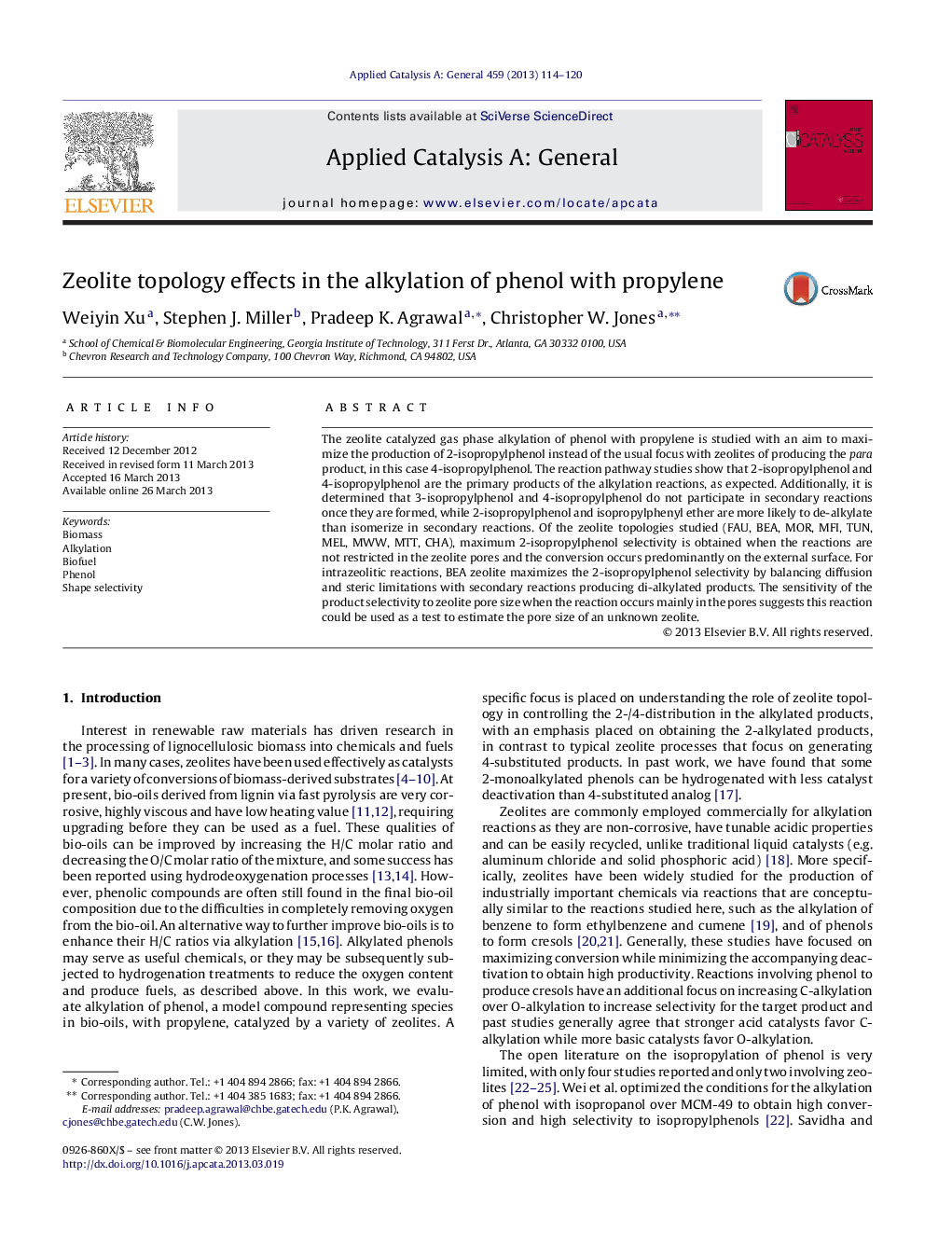| Article ID | Journal | Published Year | Pages | File Type |
|---|---|---|---|---|
| 40337 | Applied Catalysis A: General | 2013 | 7 Pages |
•The reaction pathway for the gas phase alkylation of phenol with propylene catalyzed by zeolites was established.•Zeolite pore topology was demonstrated to strongly influence product selectivity.•Larger zeolite pores gave more di-alkylated products.•For reactions occurring in the micropores, *BEA was the most selective for 2-isopropylphenol.
The zeolite catalyzed gas phase alkylation of phenol with propylene is studied with an aim to maximize the production of 2-isopropylphenol instead of the usual focus with zeolites of producing the para product, in this case 4-isopropylphenol. The reaction pathway studies show that 2-isopropylphenol and 4-isopropylphenol are the primary products of the alkylation reactions, as expected. Additionally, it is determined that 3-isopropylphenol and 4-isopropylphenol do not participate in secondary reactions once they are formed, while 2-isopropylphenol and isopropylphenyl ether are more likely to de-alkylate than isomerize in secondary reactions. Of the zeolite topologies studied (FAU, BEA, MOR, MFI, TUN, MEL, MWW, MTT, CHA), maximum 2-isopropylphenol selectivity is obtained when the reactions are not restricted in the zeolite pores and the conversion occurs predominantly on the external surface. For intrazeolitic reactions, BEA zeolite maximizes the 2-isopropylphenol selectivity by balancing diffusion and steric limitations with secondary reactions producing di-alkylated products. The sensitivity of the product selectivity to zeolite pore size when the reaction occurs mainly in the pores suggests this reaction could be used as a test to estimate the pore size of an unknown zeolite.
Graphical abstractFigure optionsDownload full-size imageDownload high-quality image (91 K)Download as PowerPoint slide
